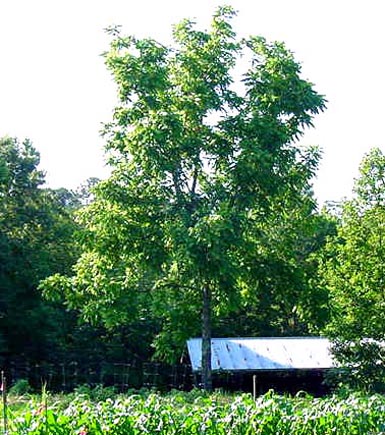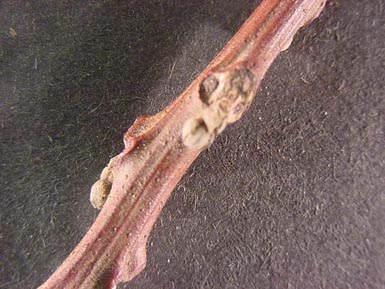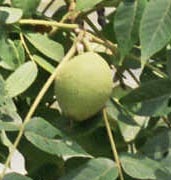Form: This species can grow to a height
of 125 ft, however, on average, it grows to around 80 ft. It has a long,
smooth trunk and a small rounded crown.

Leaves:
Arrangement: alternate; pinnately compound; 9 - 21 leaflets
Shape: ovate-lanceolate
Margin: finely serrate
Texture: glabrous
Venation: n/a
Bark: The bark is grayish black to a dark brown and separated into thin ridges by deep narrow furrows.
Twigs and buds: The twigs are stout with a light brown to an orange-brown color and have a light brown chambered pith. Large terminal buds are short, blunt, and covered with a few pubescent scales. Lateral buds are smaller.

Flowers and fruit: The flowers are staminate with 17 to 50 sessile stamens. The fruit is globose arranged solitarily on clusters. The husk is thick semi fleshy, yellowish green, pubescent, and with a strong odor. A hard ridged shell protects the nuts strong tasting meat.

Distinguishing characteristics: This species has 12 to 24 leaflets with the terminal leaflet missing occasionally. It also has stout twigs and branches with large leaf scars and a light brown chambered pith.
Range: Occurs throughout the eastern U.S. south to northwestern Florida. Isolated populations are found in eastern Texas, western Oklahoma, central Kansas, and southeastern South Dakota.
Silvics: This species grows best on deep, well-drained neutral soils that are moist and fertile. It grows slowly on wet bottomlands, dry ridges, and slopes and is commonly found on limestone soils.
Ecological and cultural importance: It ranks with the most durable hardwoods in the U.S. The wood is heavy and strong. Used primarily for furniture, tables, and as an interior finish.The veneer is used in the highest grade plywood panels. The nuts are of great importance to the eastern fox squirrels diet.